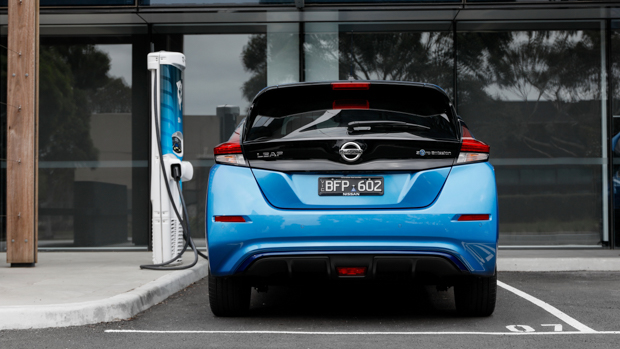-
Car Reviews
- Car News
-
Car Comparisons
Latest comparisons
- Chasing Deals
As the car market welcomes new and enticing EVs to the fray, the pioneering Nissan Leaf has adopted subtle changes to keep itself in the fight
Nissan has announced a mild facelift for its all-electric Leaf hatch which is set to arrive in Australia in the second half of 2022.
While much of the design remains the same, Nissan has made subtle changes to the exterior, though the exact specification and prices have yet to be finalised for Australia. The model currently starts from $49,990 plus on-roads.
While the Leaf pioneered more affordable electric motoring when it launched over a decade ago, it now finds itself fighting a growing pack of rivals including the Tesla Model 3 and Polestar 2 sedans, plus electric SUVs like the MG ZS EV and upcoming BYD Atto 3.
The update will likely be the last we see before the Leaf is transformed into a small SUV in 2025, which will sit on the same CMF-EV platform as the brand’s Ariya electric midsize SUV.
The second-generation Leaf has been around since 2017 in much the same form we see here, but there are some subtle differences in the latest design.
The most obvious is new wheels featuring a more striking design with Nissan’s new logo placed in the centre.
Nissan has also integrated the new logo on the ‘grille’ area, which features a cleaner design with the V-shaped chrome now deleted.
Buyers can choose from six single-tone and five two-tone colour designs including Magnetic Blue from the new-generation Qashqai small SUV.
Nissan bolstered the Leaf line-up last year with a new e+ extended-range variant, boosting the maximum driving range from 270km in the standard model up to 385km, according to conservative WLTP testing.
The increase in range is thanks to a larger 56kWh battery with maximum DC charging speed up to 100kW. This allows owners to top-up the Leaf e+ from 20 to 80 percent in 45 minutes using an ultra-fast public charger.
However, Chasing Cars found in our real-world range-test that the standard Leaf came close to its 270km range claim, though the smaller usable battery capacity of 37kWh also limits the DC charging speed to a maximum of 50kW.
Both variants can also be charged using an AC charger at speeds of up to 6.6kW. This means a home wallbox charger could charge a normal Leaf from flat to full in seven hours and 30 minutes, or 11 hours and 30 minutes in the Leaf e+.
Buyers who opt for the Leaf e+ also gain a more powerful electric motor which sends 160kW of power and 340Nm of torque to the front wheels and can hit 0-100km/h in 6.9 seconds – a noticeable jump on the 110kW/320Nm outputs and 7.9 second time in the regular Leaf.
The Leaf is currently priced from $49,990 (before on-road costs) while the Leaf e+ commands $60,490 for the added advantages. Small price increases are expected on both following the upcoming update.
Exact price details and specifications will be released closer to the official launch date in the second half of 2022.
Latest news
About Chasing cars
Chasing Cars reviews are 100% independent.
Because we are powered by Budget Direct Insurance, we don’t receive advertising or sales revenue from car manufacturers.
We’re truly independent – giving you Australia’s best car reviews.


